Richly flavored, aromatic, and soft, this Bread Machine Rye Bread Recipe with caraway seeds is simple to make, and a wonderful change from your typical white and wheat bread recipes.
Making rye bread in your bread maker involves just a few minutes of hands-on time, and it’s nearly fool-proof!
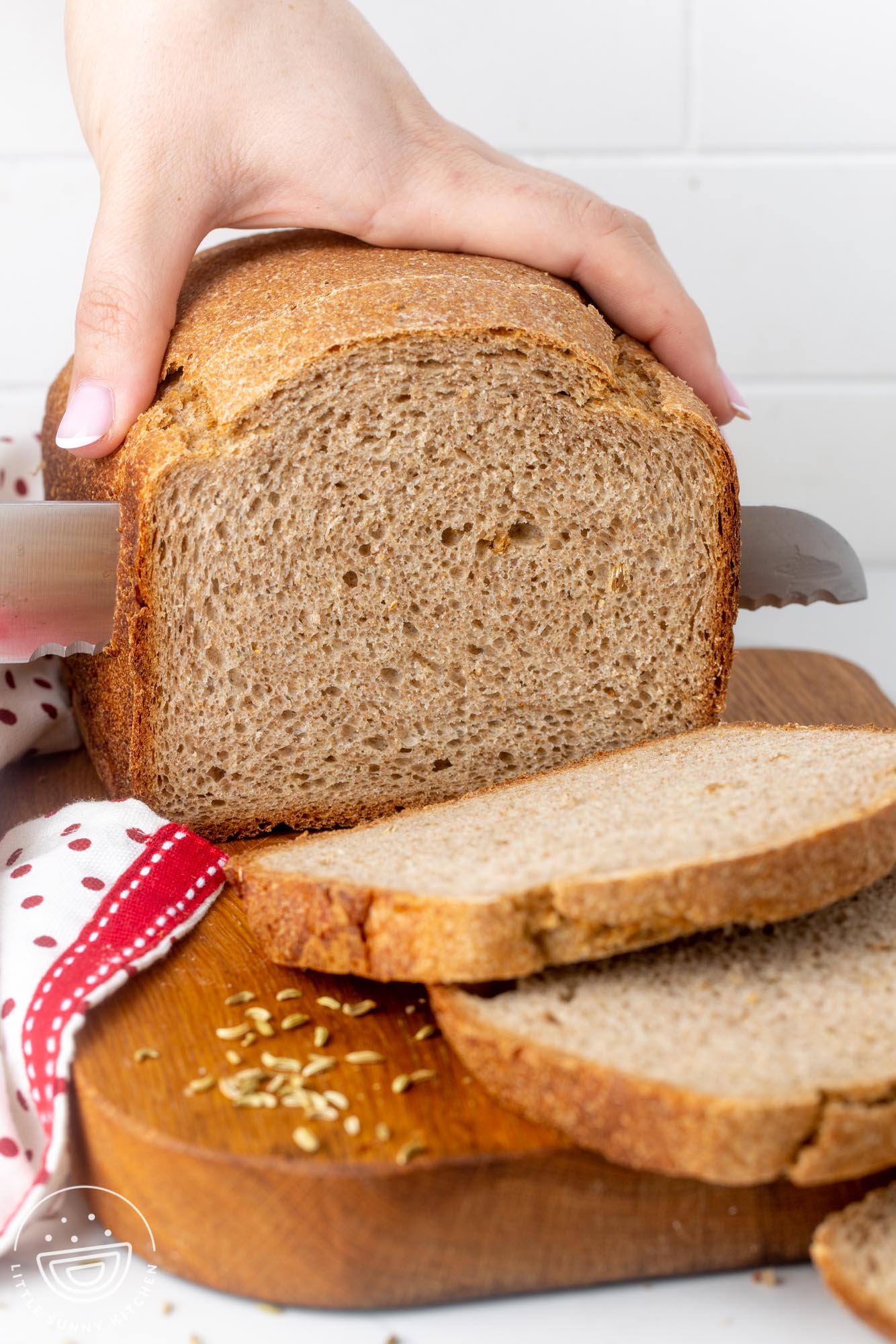
Of the basic bread types, I think that rye is my favorite. It’s the perfect base for classic sandwiches like tuna melts, Reubens, and any classic deli-style handheld.
Rye bread and butter pairs well with German dishes like brats and sauerkraut, and it makes the most flavorful toast to go with your breakfast eggs.
This bread machine rye bread recipe creates a soft, hearty loaf that is dense enough to stand up to any toppings you’d like to add to it. The optional caraway seeds add an aromatic, anise-like flavor, and the perfect amount rye flour and molasses give the loaf its gorgeous light brown color.
Loaf turned out good. The whole family liked it. Definitely will do again.
Olin
Love baking with your bread machine? Me too! Try my Bread Machine Whole Wheat Bread, Bread Machine Oatmeal Bread, Bread Machine Dinner Rolls, English Muffin Bread, or Bread Machine Seed Bread next!

Bread Machine Rye Bread Recipe Highlights
- An Easy Bread Machine Recipe – There are really only two steps to this recipe. First, layer the ingredients into the machine. Then turn it on and let the bread maker get to work! This recipe will work in most standard bread machines, using the right settings, and I’ll share how you can bake it in the oven as well.
- Perfect for Sandwiches – You just can’t make a Reuben without soft rye bread, and I’d argue that it’s a must for ham and Swiss or turkey club sandwiches too!
- Amazing Homemade Bread – I’ve tested and re-tested this recipe to come to this final perfect recipe that has the perfect texture, flavor, and ease. I just know you’re going to love it!
You can also use your bread machine to mix up the perfect batch of Pizza Dough!
Rye Bread Recipe for Bread Machine Ingredients
Here’s what you need to make this easy, soft rye:

Complete list of ingredients and amounts can be found in the recipe card below.
- Flour: A 1:1 ratio of all-purpose flour to rye flour gives this loaf the perfect soft texture. I’m using light rye flour here to make a light rye bread. For a denser loaf, whole grain dark rye flour can also be used.
- Sweetener: Use either brown sugar or molasses to give this loaf a very slight sweetness, rich flavor, and dark color.
- Yeast: Instant yeast is the best type of yeast to use in bread machine recipes. You might see yeast labeled “bread machine yeast” and that works just the same too.
- Water: Use warm water in this recipe. If you have a thermometer, make sure it’s at 110°F (45°C), or slightly more than body temperature.
- Caraway Seeds: A classic mix-in for deli rye bread, these give the bread a wonderful flavor.
- Olive Oil, Salt
How To Make Bread Machine Rye Bread

- Fill the Pan. Layer your ingredients in this order: Water, olive oil, brown sugar or molasses, salt, rye flour, AP flour, caraway seeds, and lastly, the yeast.

- Turn on the Machine: Close the lid of your bread machine and plug it in. Choose the “Rye Bread” setting, or try “whole wheat”, or “basic. Start the machine and allow it to complete the kneading, rising, and baking cycles.
Tip!
Once the baking cycle ends, let the loaf cool in the pan for 10 minutes. Then carefully remove it and allow it to cool completely before slicing.
Recipe Tips
- Measure the flours using the scoop and level method, or measure them by weight. This will ensure that you don’t add too much flour to the dough, which can cause the loaf to be tough and dry.
- A tip for measuring molasses: Coat the measuring spoon with a little bit of oil first. The sticky stuff will slide right out!
- Water that is above room temperature will give you the best results with yeast activation. Water that is too hot can damage the yeast and cold water will take too long to wake it up.
- Layer the ingredients in the correct order. The liquids go into the pan first, then the dry ingredients, and lastly, the instant yeast.
- Caraway seeds are optional. Leave them out if you don’t enjoy their flavor or would prefer a seedless rye bread.
- All bread machines are different. If you’re new to using yours, take some time to get to know all of the functions and settings before you get to baking. If your machine has a “rye” setting, use that! Otherwise, the “whole wheat” or “basic” setting should work just fine.
- This recipe makes a “medium” or 1.5 pound loaf. I don’t suggest trying to change the loaf size.
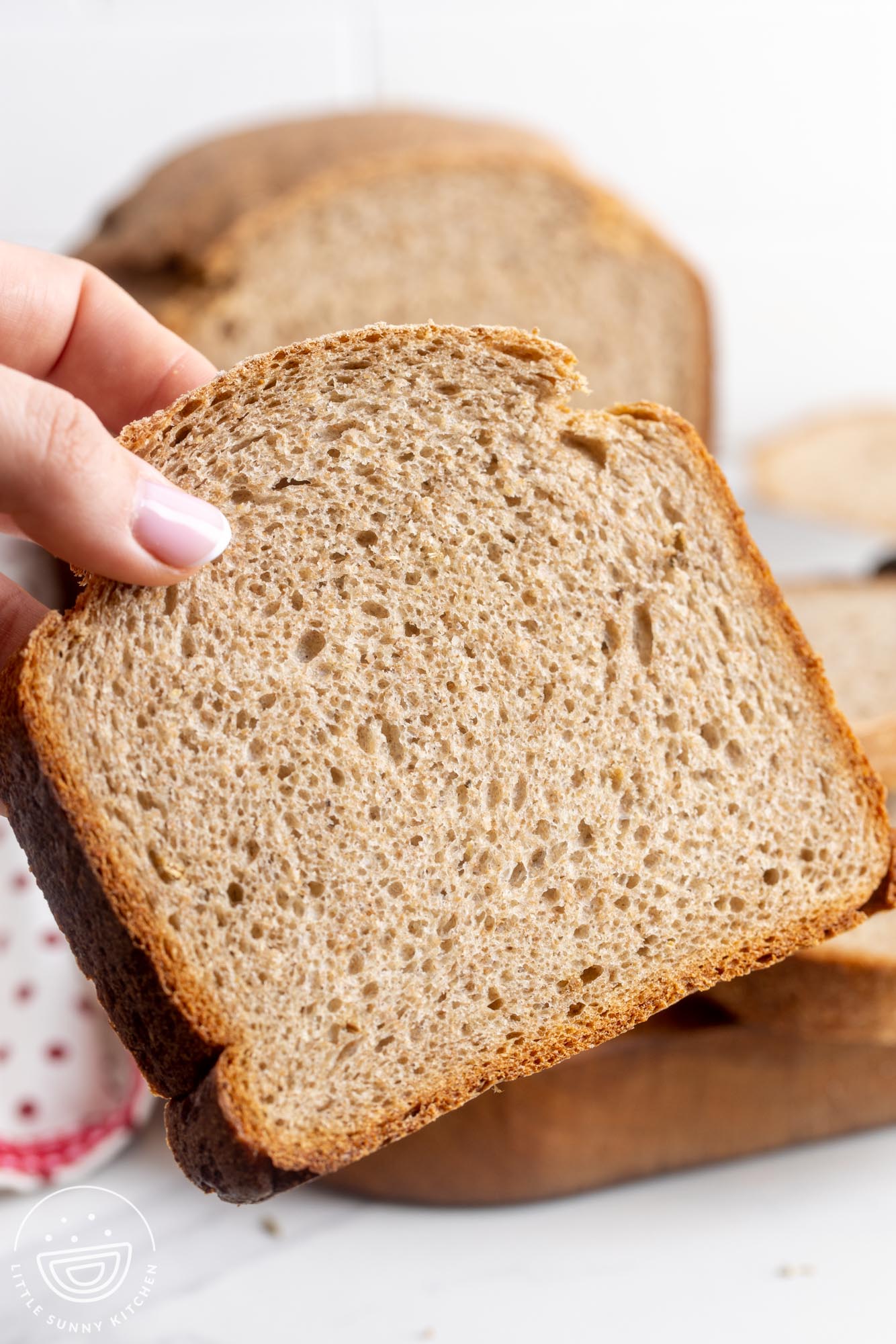
Storing Homemade Bread
- You should store your homemade rye bread wrapped in plastic wrap or foil to keep it soft and fresh.
- This bread can also be frozen. Wrap it well, and keep in the freezer for up to 2 months.
- Avoid storing fresh bread in the refrigerator. The damp, cool conditions in the fridge will cause the loaf to dry out more quickly than if it were on the counter.
Baking in the Oven
You may choose to use the bread machine to knead the dough and then transfer it to a loaf pan and finish baking it in the oven.
- Choose the “dough” setting on your bread machine, or a similar setting that will stop after the bread has been kneaded.
- Once the dough cycle is completed, remove the rye bread dough from the machine and form it into a loaf. Place it in a lightly greased baking pan.
- Cover and let rise for 45-60 minutes, or until doubled in size.
- Bake at 350°F/180°C for about 30 minutes, or until golden brown on top.
Recipe FAQs
Can I use active dry yeast in the bread machine?
Some have good luck using active dry yeast in place of instant yeast in bread machine recipes like this one.
To be on the safe side, I suggest proofing active dry yeast in the warm water with a little bit of sugar to be sure that it activates properly and fully dissolves. If you do this, the yeast will be added to the pan with the water, and not on top as the recipe suggests.
Why didn’t my loaf rise?
This problem usually happens because the yeast you’re using is not fresh and active. To test your instant yeast, add a small amount to some warm water and a pinch of sugar in a small bowl. It should foam up and bubble within a few minutes, indicating that it’s good to be used.
Does it really matter what order I add the ingredients to the bread machine?
Take a look at the instructions from the manufacturer. It will tell you to add the liquids first, then the dry ingredients. The instant yeast should always go in last so that it’s separated from the liquids until the kneading cycle begins.
Why doesn’t my dough look right?
If you notice that your dough is too dry or not coming together, you can add water, 1 tablespoon at a time, until a ball of dough is formed.
On the other hand, if the dough seems sticky, you can add flour, 1 tablespoon at a time, until the dough firms up.
Save this Rye Bread Recipe for the Bread Machine. Keep it close, because I know that once you make one loaf, you’ll want to make another!
Did you make this? Be sure to leave a review below and tag me on Facebook, Instagram, or Pinterest!

Bread Machine Rye Bread Recipe
Ingredients
- 1 ½ cups (360 ml) water warmed to 110°F (45°C)
- 2 tablespoons (30 ml) olive oil
- 2 teaspoons brown sugar or molasses
- 2 cups (240 g) rye flour
- 2 cups (240 g) all-purpose flour
- 2 teaspoons salt
- 2 teaspoons caraway seeds optional
- 2 ¼ teaspoons instant yeast
Instructions
- Layer your ingredients in the pan of the bread machine in the following order: water, olive oil, brown sugar or molasses, salt, rye flour, all-purpose flour, caraway seeds (if using), and lastly, yeast.
- Add the bread pan to the bread machine, and make sure it’s secured. Close the lid and plug in the machine. Choose the “Rye Bread” setting, or select the “Whole Wheat” or “Basic” setting for a medium size or a 1 ½ pound loaf.
- Start the machine and allow it to complete the kneading, rising, and baking cycles.
- When the baking cycle ends, unplug the bread machine, open the lid, and remove the pan from the machine using kitchen mitts. Allow the bread to cool for 10 minutes in the pan, then shake it out of the pan and allow it to cool completely on a wire rack. Carefully remove the paddle from the bottom of the loaf if it got stuck there.
Notes:
- Yield: This recipe makes a 760g/1.6lb loaf. Nutrition values here are for the entire loaf, which can make 8-10 servings, depending on how you slice it.
- Measure the flours using the scoop and level method, or measure them by weight. This will ensure that you don’t add too much flour to the dough, which can cause the loaf to be tough and dry.
- A tip for measuring molasses: Coat the measuring spoon with a little bit of oil first. The sticky stuff will slide right out!
- Water that is above room temperature will give you the best results with yeast activation. Water that is too hot can damage the yeast and cold water will take too long to wake it up.
- Layer the ingredients in the correct order. The liquids go into the pan first, then the dry ingredients, and lastly, the instant yeast.
- Caraway seeds are optional. Leave them out if you don’t enjoy their flavor or would prefer a seedless rye bread.
- All bread machines are different. If you’re new to using yours, take some time to get to know all of the functions and settings before you get to baking. If your machine has a “rye” setting, use that! Otherwise, the “whole wheat” or “basic” setting should work just fine.
Nutrition Information
This website provides approximate nutrition information for convenience and as a courtesy only. Nutrition data is gathered primarily from the USDA Food Composition Database, whenever available, or otherwise other online calculators.
© Little Sunny Kitchen

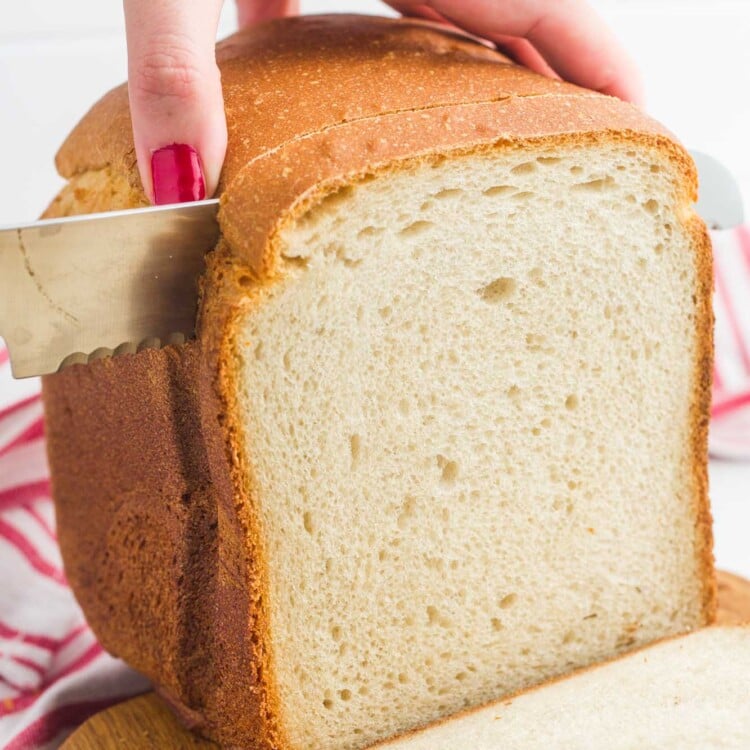
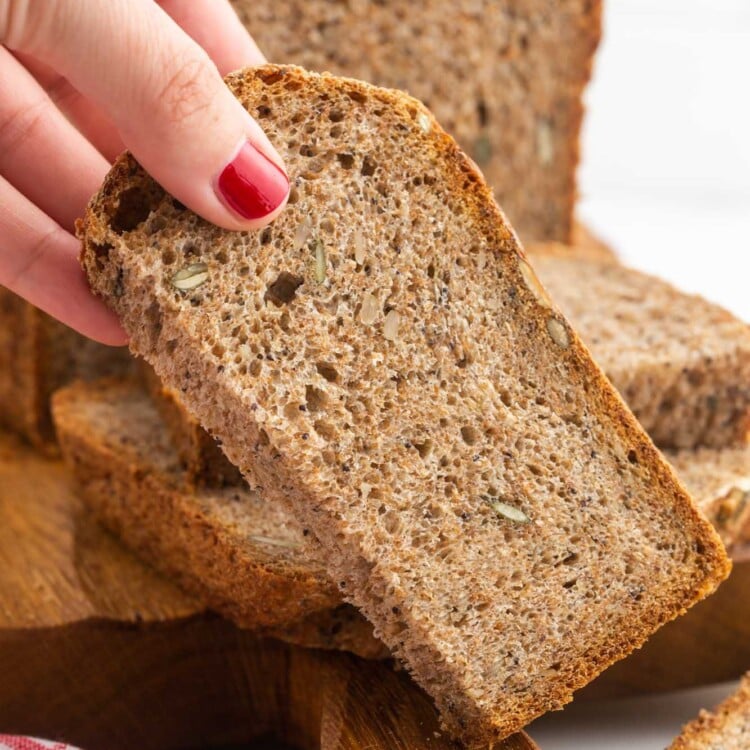
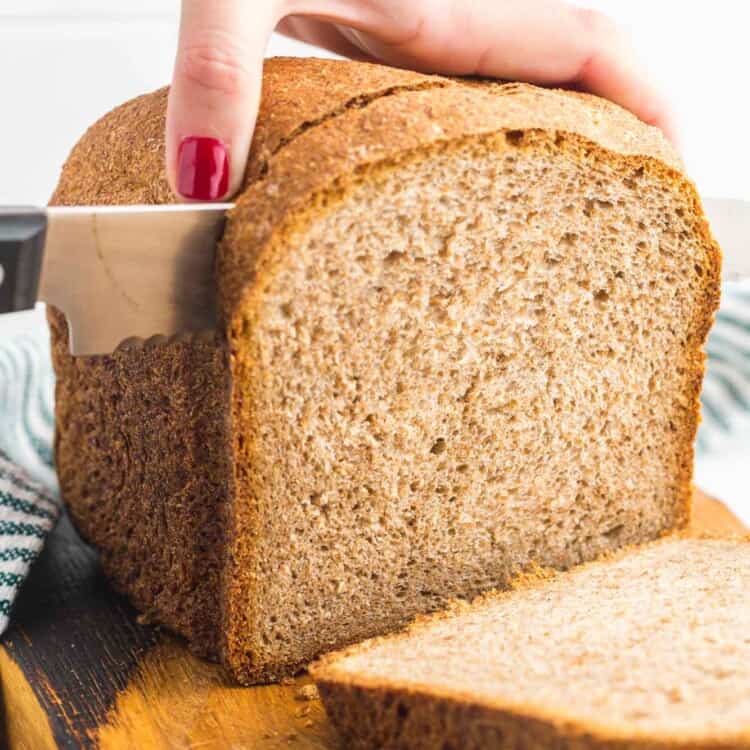
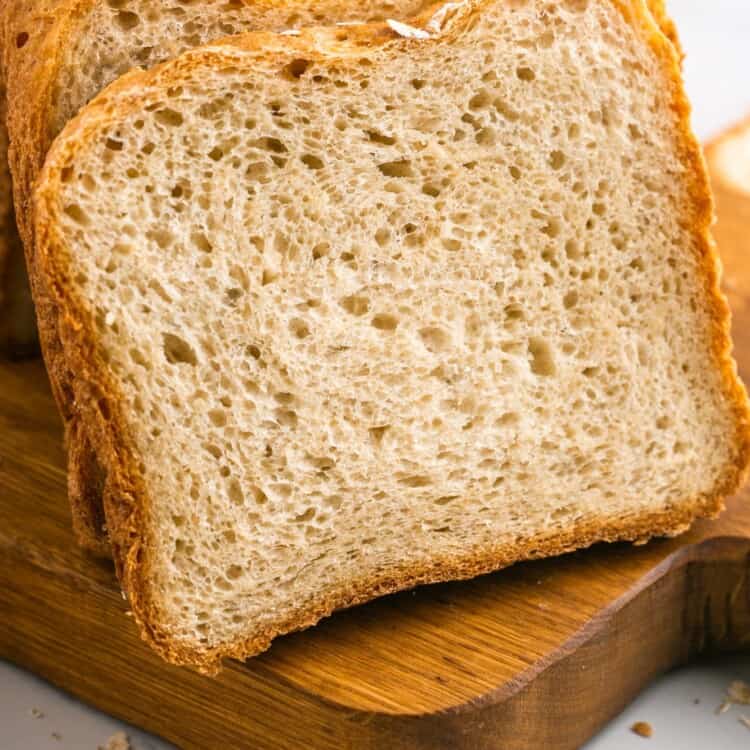
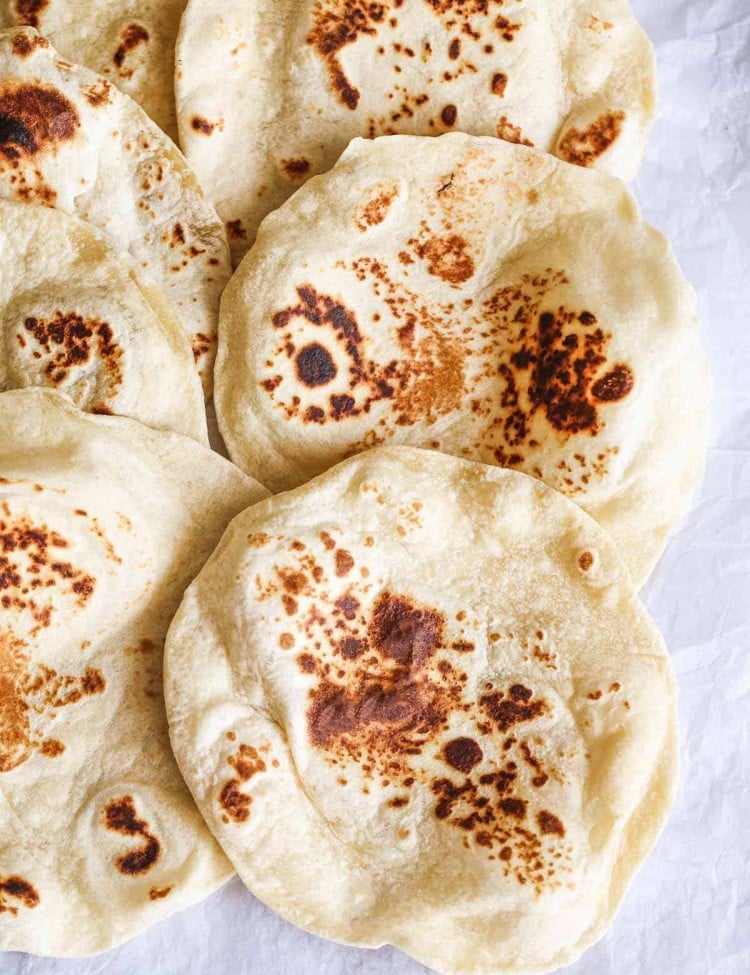
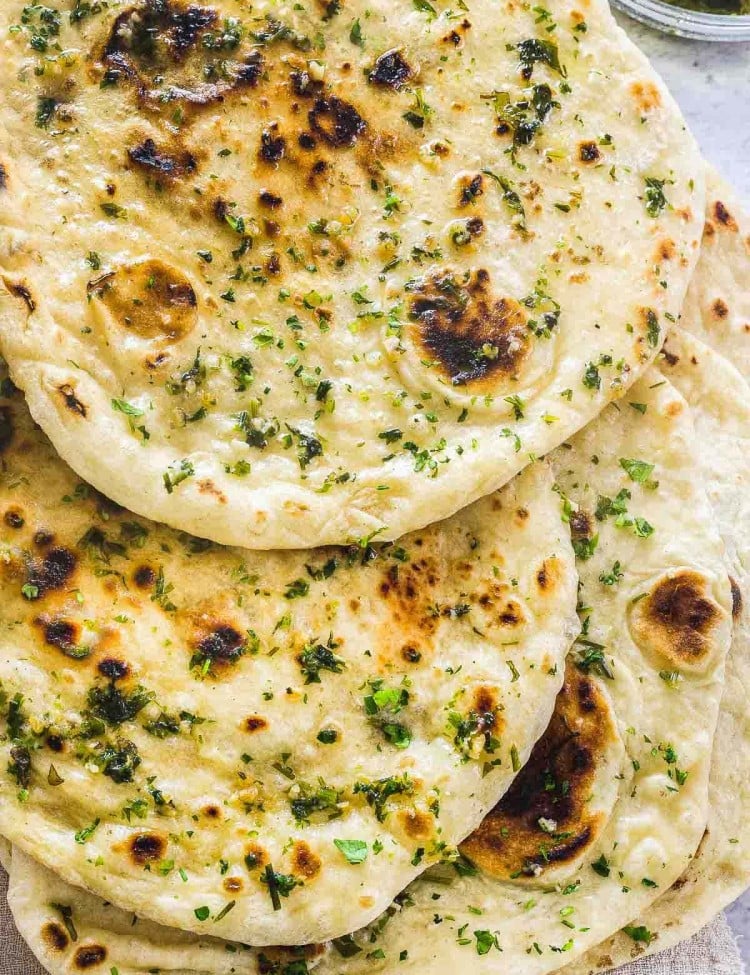
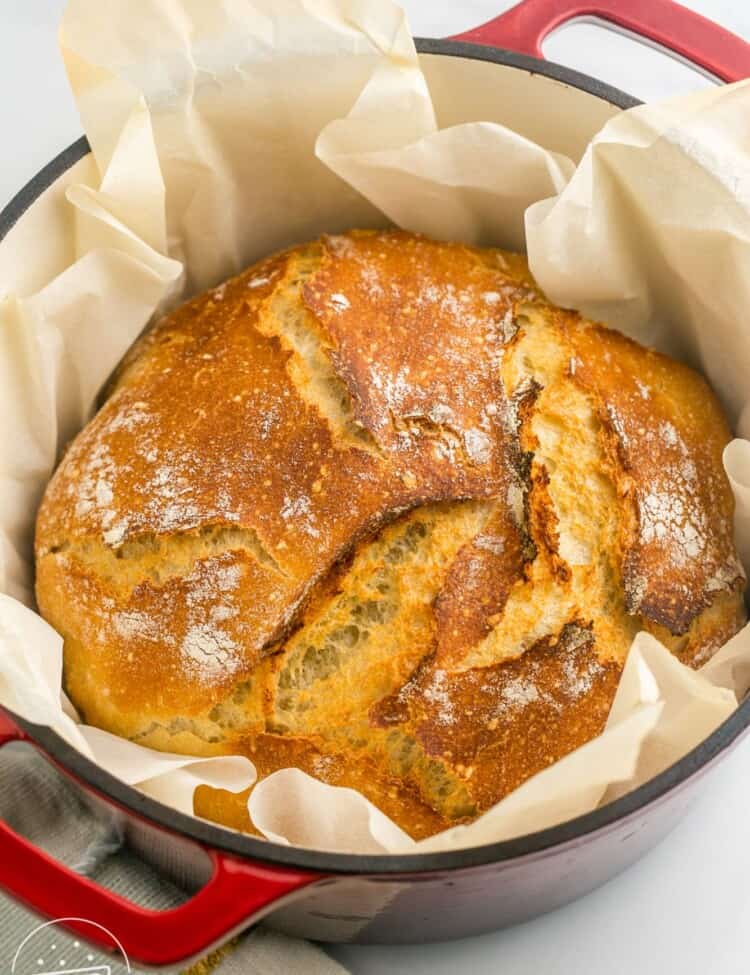
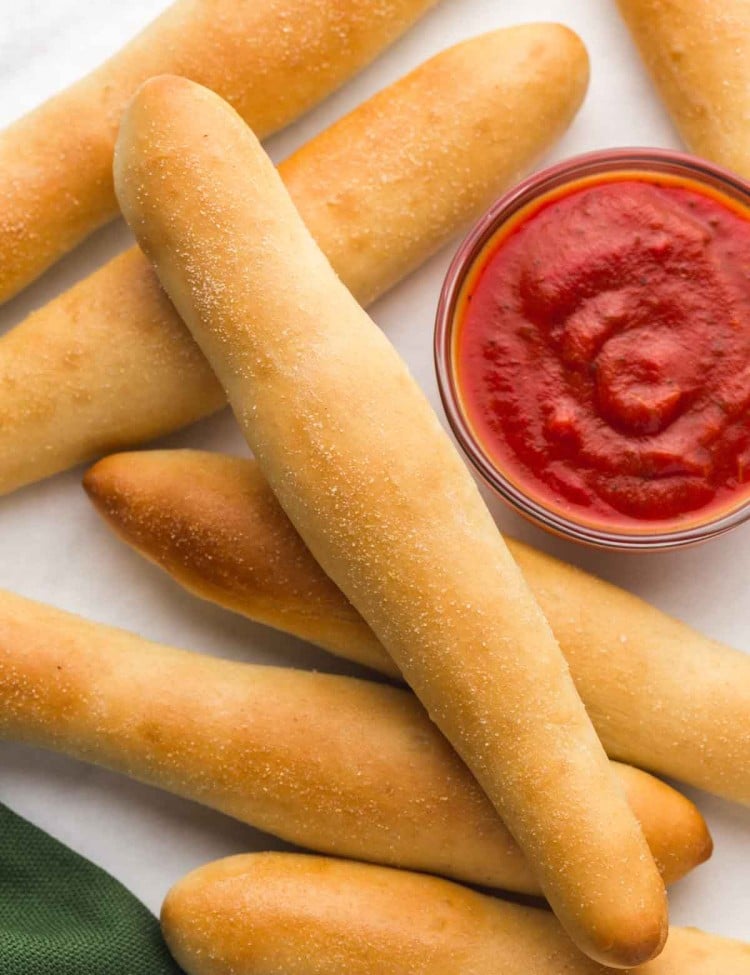

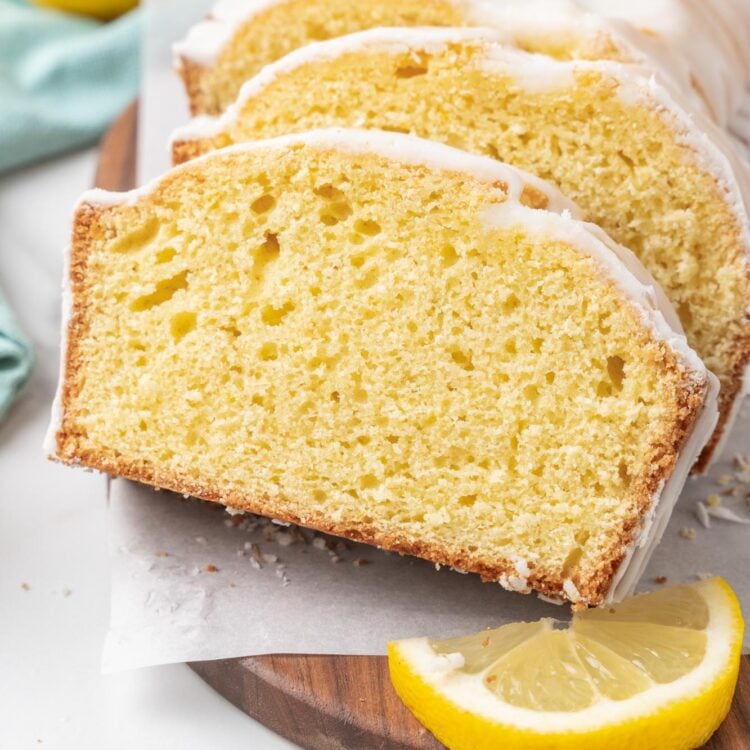
Therese says
It’s really wonderful. Easy to make. I let it rise a little bit longer than an hour and that was a good thing. And I did take it out of the bread machine and bake it in a loaf pan. It was easier to measure the serving sizes.
It doesn’t have a real strong rye flavor, but it’s still very delicious bread.
Diana says
Hi Therese, I’m glad you enjoyed the bread and thanks for sharing your tweaks.
janet hood says
Just made this bread. Thumbs up. perfect.
followed recipe exactly using just a tsp of molasses.
Maybe up that a bit next time.
Loaf came out perfect!
one of my best using bread machine.
Diana says
Thanks so much, Janet! Glad to hear it turned out so well.
Rex says
This recipe worked well for me. I really like that it has a minimal amount of sugar. So many bread recipes have many times more sugar and it really isn’t necessary.
Little Sunny Kitchen says
Thanks, Rex! I usually don’t add a lot of sugar to my breads. I agree, it’s not needed!
r. mcdermaid says
Tried your recipe for Rye Bread in the bread machine. It came out very dense, salty, and looked like Diamondhead in Hawaii. Top dropped severely. I am trying it again. Reduced salt (2 tsp) down to 1.5 tsp. Added flour to reduce wetness. Then put it on dough setting. Will take it out, add flour if necessary and bake in the oven.
Little Sunny Kitchen says
I’m glad that you were willing to troubleshoot! This recipe works perfectly for me in my bread machine, but you may need to make some changes for your machine and your tastes.
r mcdermaid says
Tried the bread machine to make dough and baked in the oven. Noticed that the dough was very wet in the machine. Added more flour. When completed in the machine, the dough was a nasty looking sticky mess. Got it out of the machine onto a floured surface. Kneaded it to finally make it look like a loaf. Baked in the oven. Much better than the last one but not something to take a picture of and publish. That is the end of my experimentation with rye flour.
Little Sunny Kitchen says
Thank you for trying again! Rye flour absorbs liquid differently than other flours, so it would have continued to absorb the water as it mixed, so your extra flour addition was probably not needed.
Vivian says
Can I omit the white flour and use only rye? I dont mind a denser loaf. Thank you
Little Sunny Kitchen says
I haven’t tested the recipe with only rye flour, but I think that the result would be too dense to bake up properly.
Vivian says
Hello, I wanted to let you know that I did try to make the bread with out AP flour. However, I noticed that the machine was not kneading the bread, basically the machine had stopped. I ended up adding white flour (not 2 cups worth) and kneading it myself for a bit by hand then placing it back in the machine. It still turned out great but boy was it sticky and messy!! I will try again with less AP flour and see how it goes. Thanks so much
Little Sunny Kitchen says
I’m glad you’re willing to troubleshoot! Thank you for sharing your process.